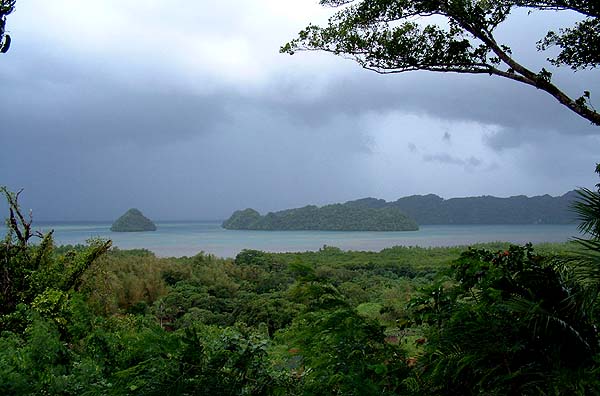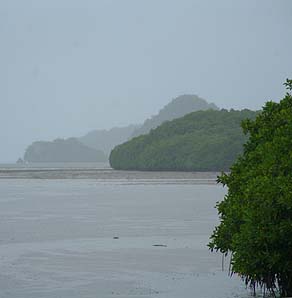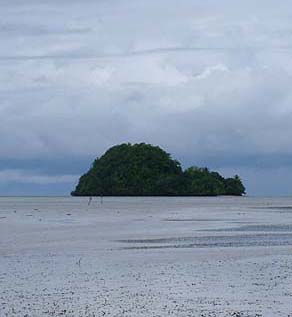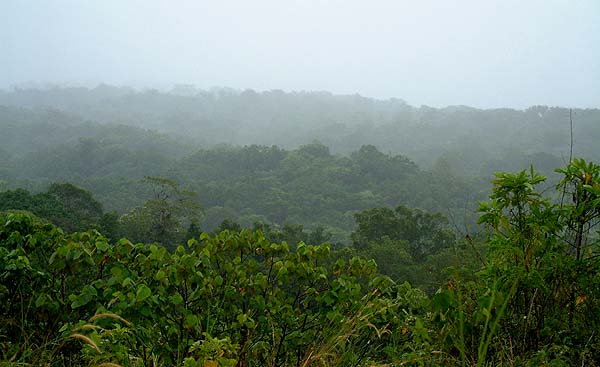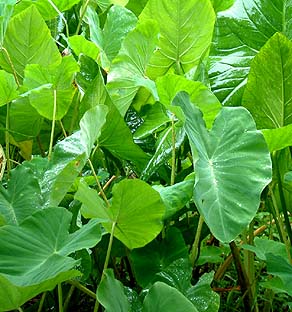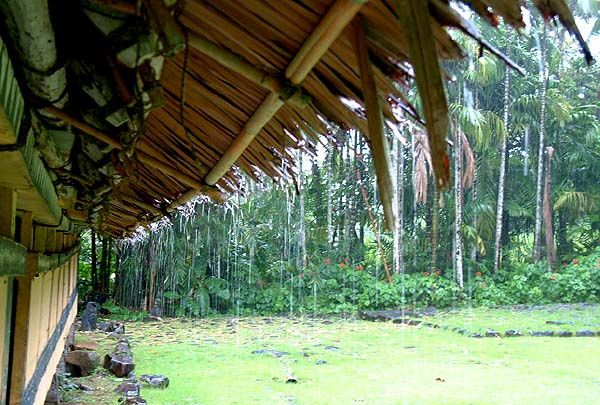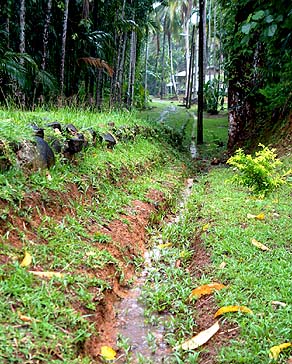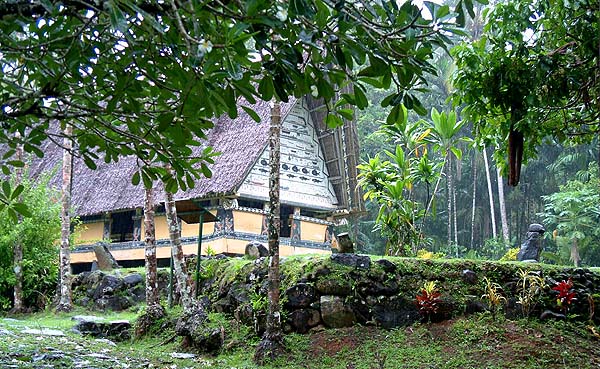 |
 |
 |
 |
||||
|
|
|
|
|
|
|
|
|
|
|
|||||||
|
|
|
|
Rain clouds over Airai's Rock Islands.
|
|
“The rain has to do with plantings, and there is rain to do with the flowers of the forest," Noah says. "For the sea, there is rain that the fishermen know will induce spawning of many things. Rabbit fish and other fish as well as sea urchins and clams, for example. Certain seasons when we have the rain, fishermen will connect it to the sea: ‘okay, there’s a particular species of fish that is now migrating and spawning.’ That’s usually pretty much in the summer time, when the first time its starting to rain, it usually storms. That’s when you have a lot of nutrients in the water. So fishermen know that.”
|
||
|
|
||
“We have a calendar that we worked around wind and tide,” Kathy states. “It’s a Palauan calendar. When the wind is in a particular direction, there’s a moon for it and there are certain trees that will bloom and birds that’ll lay eggs and fish that will spawn and so forth and all the way. It’s whole pattern, and it’s not twelve months; it’s six months here and six months there and the cycle can change.” “For example," Noah explains, "it is known that in this particular month, the sea urchin is full of eggs. It’s good to harvest the sea urchin. And throughout that week, if it rains very heavily, they would know that after the rain, the sea urchin would be empty because the rain will trigger them to release the eggs. So after the rain—a couple of days, or a day—if you went and harvested sea urchins, they would be empty, so no need to be harvesting sea urchins. The time to harvest is when they have the eggs. Same way with clams. "
|
|
|
"And we associate those eggs with certain trees and plants. For example, the breadfruit, the ripening of breadfruit, is timed with a certain type of sea urchin, so when the ripening breadfruit is ready, then you know some sea urchin is good to eat at that particular time of the year. "The same way with almond trees: a certain time of the year the leaves turn very red, really red, and then they will shed their leaves and form new ones. But when they are very red, that means the mantis shrimp will be very fat. If you want fat mantis shrimp, you might go catch them then. So all of this knowledge is there, and it’s used for different seasons.”
|
|
|
|
Rain in the hills above the Palau International Airport.
|
“There’s a distinct difference in wind patterns and the amount of rain during the year, but of course it rains usually during the easterly season. It rains in the morning and in the afternoon, so the rain comes and goes. It comes up very strong and disappears. Unlike the westerly winds, when it rains and rains and rains and rains."
|
||
|
|
||
"With the easterly wind, you know the wind is going to be steady, with a shower in the morning, maybe strong. And we also describe the ‘male ongós’ and the ‘female ongós.’ The ‘male’ ongós is when you really have strong winds coming from the east, and that happens just when the wind is changing to the east. That's when you know that it’s going be a very strong or a male ongós—a very strong windy ongós— or a 'female' or moderate ongós. “July is an unsteady month. We have rain in July. And so a lot of spawning takes place in July. November is an unsteady month. I think it’s just the two distinct winds, and the strength of the wind, that drives the pattern of fishing and spawning."
|
|
|
"So the easterlies season, the ongós season, is perhaps the safest— people treat it as if everything is sort of predictable. The westerly season can be stormy: it’s mostly calm, but it can be heavy rain, it can be almost anything. “There are names for different strengths of the rain. The lightest rain that we refer to is chemechemel a olik, meaning like, ‘the fruit bat taking a leak.’ That’s the lightest rain, kind of a misty, drizzling, very small drizzle. They might say 'okay, chemechemel a olik, just a leak of the rain, the leak of the fruit bat.' And then the hard ones, the really hard rain, is what they term osulbeláb. It means a heavy and continuous rain.”
|
|
|
|
|
“There was an interesting object, previously, in Airai Village” Johnson and the chiefs tell us. “It disappeared in about 1914 or 1915, when the Japanese came. It was an ulengang, one of those small houses for the gods where they make offerings. And there was a wooden carving of a baby inside. That wooden object was brought by the Ngetchong's clan or family, when they came to Airai from Ngetbang, from a special village. So they are in charge of that object. “Sometimes the kids—like my grandmother—would say ‘we go to take the wooden baby out to play with it.’ And then when that happens, there would be an instant thunder storm. And when the kids tried to put the baby back, it wouldn’t fit through the entrance. Just couldn’t get in—no matter which way, it didn’t go in. Then that man, the chief Renguul, would know instantly that the kids had removed that wooden baby. So he would take it and put some turmeric ointment on it, and then it would easily go in. At least, that is the story.”
|
||
|
|
||
“The older people have their own calendar,” Masaharu says. “They know the seasons and the names of the months when certain seasons come. But other people just say ‘rainy season’, ‘dry season,’ ‘typhoon season’ and so forth. But the earlier people had those seasons in their own calendar and they understand, they know what they are. “Right now I think that the seasons have changed so much, when talking with the older people they will say, ‘we cannot predict the weather like before.’ Because it is supposed to be a dry season and then we have plenty of rain. It doesn’t fit their earlier calendar anymore."
Rain gutters along the pathway in Airai Village serve their purpose. |
|
|
|
|
|
"So people I guess do not use the older system now because the weather is sort of unpredictable. Like this year, we were supposed to have El Niño and we been having rain since then. It was supposed to be a dry season. And then we have rain. So people just don’t understand what is happening."
|
||
|
|
||
|
|
|
|
|
|

|
| Airai Home | Map Library | Site Map | Pacific Worlds Home |
|
|
|
|

|
|
|
|||
| Copyright 2003 Pacific Worlds & Associates • Usage Policy • Webmaster |
|||
